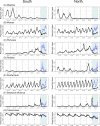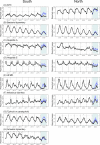Changes in notifiable infectious disease incidence in China during the COVID-19 pandemic
- PMID: 34836947
- PMCID: PMC8626444
- DOI: 10.1038/s41467-021-27292-7
Changes in notifiable infectious disease incidence in China during the COVID-19 pandemic
Abstract
Nationwide nonpharmaceutical interventions (NPIs) have been effective at mitigating the spread of the novel coronavirus disease (COVID-19), but their broad impact on other diseases remains under-investigated. Here we report an ecological analysis comparing the incidence of 31 major notifiable infectious diseases in China in 2020 to the average level during 2014-2019, controlling for temporal phases defined by NPI intensity levels. Respiratory diseases and gastrointestinal or enteroviral diseases declined more than sexually transmitted or bloodborne diseases and vector-borne or zoonotic diseases. Early pandemic phases with more stringent NPIs were associated with greater reductions in disease incidence. Non-respiratory diseases, such as hand, foot and mouth disease, rebounded substantially towards the end of the year 2020 as the NPIs were relaxed. Statistical modeling analyses confirm that strong NPIs were associated with a broad mitigation effect on communicable diseases, but resurgence of non-respiratory diseases should be expected when the NPIs, especially restrictions of human movement and gathering, become less stringent.
© 2021. The Author(s).
Conflict of interest statement
The authors declare no competing interests.
Figures



References
Publication types
MeSH terms
Grants and funding
LinkOut - more resources
Full Text Sources
Medical

